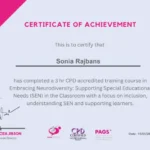The phenomenon of crowd energy — the collective emotional and psychological power generated by groups — has influenced human outcomes for millennia. From ancient Roman spectacles to today’s digital communities, understanding how crowd dynamics operate is essential for developing effective strategies in competition, warfare, and social movements. This article explores the psychological foundations, historical examples, and modern applications of crowd energy, illustrating how it can be harnessed ethically and effectively.
Introduction: The Power of Crowd Energy in Shaping Outcomes
Crowd energy refers to the collective emotional force that emerges when individuals act in unison, often amplifying their individual motivations into a powerful group dynamic. This phenomenon significantly influences collective actions, whether in ancient battlefields or modern political rallies.
Historically, crowd energy has been pivotal in shaping the outcomes of events. The Roman Colosseum, for example, was not just an arena for gladiatorial combat but a site where the collective mood of thousands could sway the fate of fighters through their cheers or boos. Today, large-scale events like sports matches, political protests, and social media campaigns demonstrate how crowd energy persists as a vital force in collective decision-making.
Understanding the mechanisms behind crowd dynamics offers valuable insights into strategic planning. Whether for fostering unity or managing influence, recognizing how emotions spread and amplify within groups can determine success or failure.
Crowd Energy as a Strategic Asset in Competition and Warfare
Examples from Ancient History: Crowd-Driven Victories in Roman and Gladiatorial Contexts
Modern Strategies Leveraging Crowd Energy: The Case of Maximus Multiplus
Sacred Symbols and Rituals: The Power of Symbols in Fostering Crowd Unity
Non-Obvious Factors Influencing Crowd-Driven Outcomes
The Evolution of Crowd Strategies: From Ancient Arenas to Digital Age
Ethical Considerations and Risks of Manipulating Crowd Energy
Conclusion: Harnessing Crowd Energy for Sustainable Victory
The Psychological Foundations of Crowd Influence
At the core of crowd energy lies the amplification of individual emotions through collective resonance. When people gather, emotional contagion occurs — feelings like excitement, anger, or unity spread rapidly, often reaching levels unattainable individually. This emotional amplification can lead to spontaneous actions, such as cheering, protesting, or even riots.
Social psychology explains mechanisms like social conformity, where individuals align their behaviors with perceived group norms. This conformity often results in victories where the collective mood overrides individual doubts. For example, during ancient Roman spectacles, the crowd’s enthusiasm could determine a gladiator’s fate, encouraging fighters to perform daring acts or accept risky outcomes.
Modern research supports this, showing that group emotions can influence decision-making processes. A notable case is the 2011 Arab Spring protests, where collective hope and anger fueled mass mobilization, demonstrating how shared emotional states can catalyze political change. Recognizing these psychological mechanisms allows strategists to craft messages and environments that foster positive crowd energy.
Crowd Energy as a Strategic Asset in Competition and Warfare
In ancient battles, the morale of soldiers was often directly linked to the crowd’s support. Spectators’ cheers could boost warriors’ confidence, while boos could undermine it. Gladiatorial contests relied heavily on the crowd’s approval, with fighters employing tactics to appeal visually and emotionally to the audience, thus influencing outcomes beyond raw combat skill.
Today’s parallels are evident in stadiums, political rallies, and digital communities. The energy of a packed stadium can motivate athletes or teams to perform at their best, while political rallies aim to generate a sense of collective purpose that influences voter behavior or decision-making within movements.
Research indicates that positive crowd support can sway leaders’ decisions, as seen during the 2016 US presidential campaign, where rally size and enthusiasm often correlated with candidate momentum. Harnessing crowd energy thus becomes a strategic asset, capable of influencing outcomes in competitive environments.
Examples from Ancient History: Crowd-Driven Victories in Roman and Gladiatorial Contexts
Ancient Roman spectacles vividly demonstrate how crowd approval impacted outcomes. Gladiators, especially those with specialized skills like horseback fighters or retiarii, relied heavily on audience reactions. A gladiator’s success often depended on their ability to entertain and excite the crowd, which in turn could influence the editor (sponsor) to spare or condemn a fighter.
| Gladiator Type | Crowd Appeal | Strategic Advantage |
|---|---|---|
| Equestrian Fighters | High, due to spectacle and skill | Boosts morale and can sway decision-makers |
| Retarii (Net Fighters) | Variable, depending on showmanship | Relies on crowd reactions for survival |
Spectacles like wild beast hunts further exemplify how the crowd’s excitement can elevate morale, creating an atmosphere where fighters and animals alike perform under heightened emotional states. Such events were carefully designed to evoke visceral reactions, solidifying their role as strategic tools for controlling mass sentiment.
Modern Strategies Leveraging Crowd Energy: The Case of Maximus Multiplus
Contemporary organizations recognize the importance of crowd dynamics in achieving success. Digital platforms enable brands and communities to engage audiences globally, creating a sense of shared purpose and excitement. An illustrative example is Maximus Multiplus uk ngl, which exemplifies how modern entities integrate crowd energy into their strategies through online engagement, live events, and community initiatives.
Techniques such as social media campaigns, interactive content, and real-time feedback channels are used to amplify emotional connections. For instance, viral challenges or hashtag movements can galvanize collective action, translating virtual enthusiasm into tangible results. The key lies in fostering authentic community bonds that sustain long-term engagement and support.
By aligning organizational goals with the collective emotional state of their audience, modern strategists harness crowd energy as a powerful asset, echoing the ancient principle that unified emotional momentum can drive victory.
Sacred Symbols and Rituals: The Power of Symbols in Fostering Crowd Unity
Symbols serve as focal points for collective identity, fostering emotional bonds that unify groups. The Roman eagle (Aquila) symbolized imperial power and collective pride, inspiring loyalty and morale among soldiers and citizens alike.
Modern equivalents include national emblems, corporate logos, and social media icons. These symbols evoke shared values and purpose, reinforcing emotional bonds across vast communities. For example, during international sporting events, flags and team logos catalyze feelings of patriotism and camaraderie, fueling crowd energy.
Effective use of symbols can turn individual participation into a collective ritual, enhancing emotional investment and creating a resilient sense of community — crucial factors in sustaining long-term influence and victory.
Non-Obvious Factors Influencing Crowd-Driven Outcomes
While emotions and symbols are vital, several subtle factors influence how crowd energy translates into outcomes. Leadership charisma, for example, plays a crucial role; charismatic figures can channel and amplify crowd sentiments, shaping perceptions and decisions.
Environmental variables, such as the physical setting or prevailing social conditions, can either amplify or dampen crowd influence. A supportive environment enhances emotional expression, while restrictive conditions may inhibit it.
Psychological biases, including herd behavior and confirmation bias, often lead groups to make decisions that deviate from rational analysis. Recognizing these biases allows leaders to craft interventions or messages that guide collective action more ethically and effectively.
The Evolution of Crowd Strategies: From Ancient Arenas to Digital Age
Historically, physical spectacles like gladiatorial games or Roman triumphs relied on face-to-face crowd engagement. Today, technological advancements have transformed these dynamics into virtual experiences, enabling global participation and influence.
Social media platforms, live streaming, and data analytics allow organizers to gauge and amplify crowd energy at unprecedented scales. For example, viral campaigns or online movements can mobilize millions instantly, demonstrating the exponential potential of digital crowd management.
Looking ahead, emerging technologies like artificial intelligence and predictive analytics promise even more refined methods of harnessing crowd energy, enabling strategic decisions that are more targeted and ethically responsible.
Ethical Considerations and Risks of Manipulating Crowd Energy
With great power comes responsibility. The manipulation of crowd energy can lead to mass hysteria, misinformation, or social unrest if misused. Leaders and organizers must prioritize ethical engagement, ensuring transparency and respect for individual autonomy.
Historical examples, such as propaganda campaigns or manipulative advertising, highlight the potential for abuse. Modern strategies should emphasize fostering genuine community bonds rather than exploiting emotional vulnerabilities.
A balanced approach involves understanding the influence of crowd dynamics while maintaining integrity, promoting positive social change and sustainable victory rather than short-term gains derived from manipulation.
Conclusion: Harnessing Crowd Energy for Sustainable Victory
Throughout history, the collective emotional power of crowds has proven to be a decisive factor in shaping outcomes. Whether in the brutal arenas of ancient Rome or in today’s digital landscape, understanding and ethically harnessing crowd energy offers a strategic advantage.
Lessons from the past teach us that symbols, leadership, environmental factors, and emotional resonance are key components of effective crowd engagement. Modern innovations, exemplified by platforms like Maximus Multiplus uk ngl, demonstrate how these principles continue to evolve, enabling organizations to foster unity and influence at scale.
“The strength of a crowd lies not just in numbers, but in the shared emotional energy that binds them — a force as old as human society, yet ever-evolving in form.”
By ethically leveraging this timeless force, modern strategists can achieve sustainable victories that resonate beyond fleeting moments, fostering enduring communities rooted in shared purpose and collective strength.





